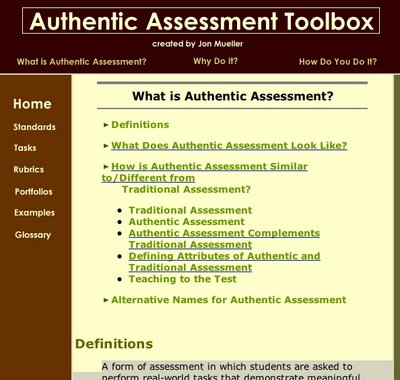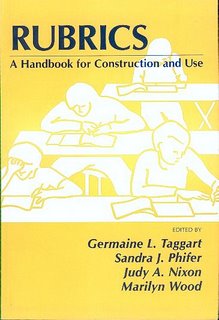Theological EducationCalian, Carnegie Samuel. 2002.
The Ideal Seminary: Pursuing Excellence in Theological Education. Louisville, KY: Westminster John Knox.
Dietrich Bonhoeffer.
Life Together. For a summary of what the book is about, go to http://en.wikipedia.org/wiki/Life_Together
Shaw, Perry. 2006. The Hidden and Null Curricula in
The Theological Educator, 1. no.2: 3-7. Click
here to access the article.
Understanding the Changing WorldLee Wanak’s article in
Journal in Asian Missions Vol 2:1 entitled “Theological Education and the Role of Teachers in the 21st Century: A Look at the Asian Pacific Region.” Click
here to access the article.
Understanding your learnerBlair, Christine E. 1997. Understanding Adult Learners: Challenges for Theological Education.
Theological Education 34, no. 1: 11-24.
Flannery, Daniele D. 1993. Global and analytical ways of processing information.
New Directions for Adult and Continuing Education 59:15-24.
Articles from
Common Ground Journal Vol 3:1 (Theological Education as Mission -- see especially Marlene Enns’s article).
Use of Educational Technology Related LiteratureAscough, Richard S. 2002. Designing for online distance education: Putting pedagogy before technology.
Teaching Theology and Religion 5, no. 1: 17-29.
Chong, Calvin. 2007. The Rise of the Net-Generation: An emerging challenge to seminary classrooms in Asia. Paper read at the 7th International Conference of The Korea Society for Christian Education & Information Technology at the Prebyterian Theological Seminary, Cavite, Philippines, 7th February 2007.
Delamarter, Steve. 2005. A new tool or a new way of doing theological education?
Theological Education 41, no. 1: 105-116.
Hess, Mary. 2005. What difference does it make? Digital technology in the theological classroom.
Theological Education 41, no. 1: 77-91.
Hook, William J. 2005. Implications of a digital age for theological education.
Theological Education 41, no. 1: 57-62.
Jewell, John P. 2005. What does all this (technology) mean for the church?
Theological Education 41, no. 1: 17-31.
McKinney, Larry J. 2003. Evangelical Theological Education: Implementing our own Agenda. Paper read at the ICETE International Consultation for Theological Educators, 20 August 2003, at High Wycombe, UK. Click
here to access the article.
Oblinger, Diane and James Oblinger. 2005. Educating the Net Generation, Boulder, Colo.: Educause. Click
here to access the article.
Prensky, Marc. 2001a. Digital natives, digital immigrants. On the Horizon 9, no. 5. Click
here to access the article.
Roels, Shirley. 2004. Global discipleship and online learning: What does Blackboard have to do with Jerusalem?
Christian Scholar's Review 33, no. 4: 451-470.
Viktora, Jan. 2005. Not just one more good idea: A reflection on the integration of digital technology in theological education.
Theological Education 41, no. 1: 33-44.
Wanak, Lee C. 2000. Theological education and the role of teachers in the 21st century: A look at the Asia pacific region. Journal of Asian Mission 2, no. 1: 3-24. Click
here to access the article.
How to conduct classroom discussions1. UCSC's
Getting More Out of Classroom Discussions.
2.
Ten Techniques for Energizing Your Classroom DiscussionsTeaching tips and Principles1. Arthur Chickering’s “Seven principles for good practice in undergraduate education”. The 7 principles are published and discussed in the sites below:a.
Chickering's article from the Washington Center News b.
University of Hawaii Faculty Teaching Tips sitec.
Joseph Codde (Michigan State University) on the Seven Practicesd. Guidance from the
Teaching, Learning and Technology Group on how we can use technology to promote the seven principles.
2. Using Questions to promote learning and thinkinghttp://www.pgcps.org/~elc/theory9.html
http://tlt.its.psu.edu/suggestions/questionwriting/index.shtml
Types of questions
http://www.cte.uiuc.edu/Did/docs/QUESTION/quest1.htm
http://www.oncourseworkshop.com/Learning030.htm
http://honolulu.hawaii.edu/intranet/committees/FacDevCom/guidebk/teachtip/questype.htm
http://www.uwsp.edu/Education/lwilson/learning/quest2.htm
http://www.esd.qmul.ac.uk/qmpas/training_pack/TYPES_QUESTIONS.pdf
3. Assessment of student learning
Starcher, Rich. 2007. “Assessing for Quality.” ACTEA Forum #6.
Classroom Assessment Techniques (CATS)
Simple tips on how to assess student learning using Classroom Assessment Techniques.
URLs to give you some good ideas about what CATs are and how to use them.
http://www1.umn.edu/ohr/teachlearn/tutorials/powerpoint/assessment.html
http://www.siue.edu/%7Ededer/assess/catmain.html
http://honolulu.hawaii.edu/intranet/committees/FacDevCom/guidebk/teachtip/assess-2.htm
http://www.schreyerinstitute.psu.edu/Resources/AssessmentNeeds.asp#1
http://www.vanderbilt.edu/cft/resources/teaching_resources/assessment/cats.htm



















































